You’ll maximize your activity motivation by configuring these seven notification settings: real-time progress alerts for immediate milestone recognition, daily achievement reminders delivered during peak engagement hours, weekly summary reports highlighting accomplishments and trends, hourly activity prompts customized to your baseline fitness level, custom interval tracking aligned with your personal goals, location-based reminders triggered by GPS when you’re near parks or gyms, and smart adaptive timing that uses AI to analyze your patterns and deliver notifications when you’re most receptive to taking action.
Real-Time Progress Achievement Alerts
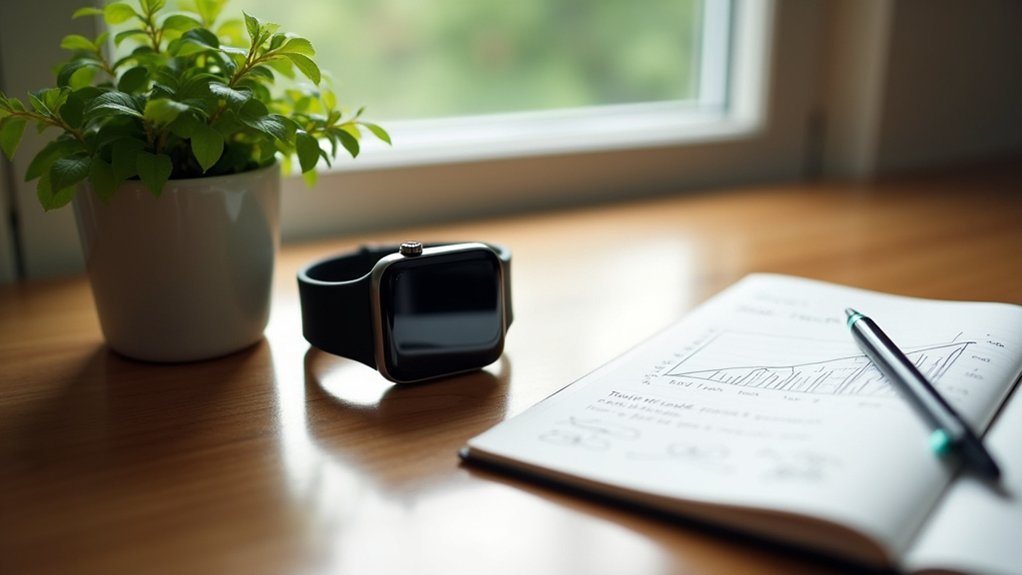
When you implement real-time progress achievement alerts, you’ll transform how quickly your team identifies and resolves issues that could derail project timelines. These notifications enable immediate intervention when bottlenecks emerge, maintaining workflow continuity and boosting task completion rates.
Real-time alerts transform team responsiveness, enabling immediate bottleneck resolution and maintaining project momentum through instant issue identification.
You’ll accelerate decision-making by receiving up-to-date project status information, allowing proactive adjustments that keep everyone aligned with goals. The instant feedback encourages your team to stay focused and accountable while fostering enhanced collaboration through shared progress insights.
Configure immediate alerts for critical milestones and significant deviations to maximize responsiveness without causing alert fatigue. Set adjustable thresholds that trigger notifications only when meaningful progress occurs or delays emerge.
This approach maintains steady momentum while providing the gratification that reinforces positive behaviors and sustained motivation. Real-time alerts ensure a unified response among team members, reducing downtime and maintaining workflow efficiency during critical project phases.
Daily Milestone Reminder Notifications
Since daily milestone reminders bridge the gap between goal setting and consistent action, you’ll maximize their impact by timing them strategically throughout your users’ routines.
Send three notifications daily—this “magic number” balances visibility without overwhelming users or triggering notification fatigue.
Personalize each reminder by incorporating user names and specific milestone data rather than generic messages. Frame notifications as celebrations of achievements instead of pushy marketing language. This approach triggers positive emotions and reinforces continued goal pursuit.
Include actionable next steps and consider users’ time zones for precise delivery. When you craft clear, concise content that acknowledges past progress while encouraging future action, you’ll create positive reinforcement loops that boost engagement rates and prevent app abandonment through sustained motivation. Users who opt into push notifications typically demonstrate long-term commitment, showing sustained engagement for at least nine sessions.
Weekly Goal Summary Updates
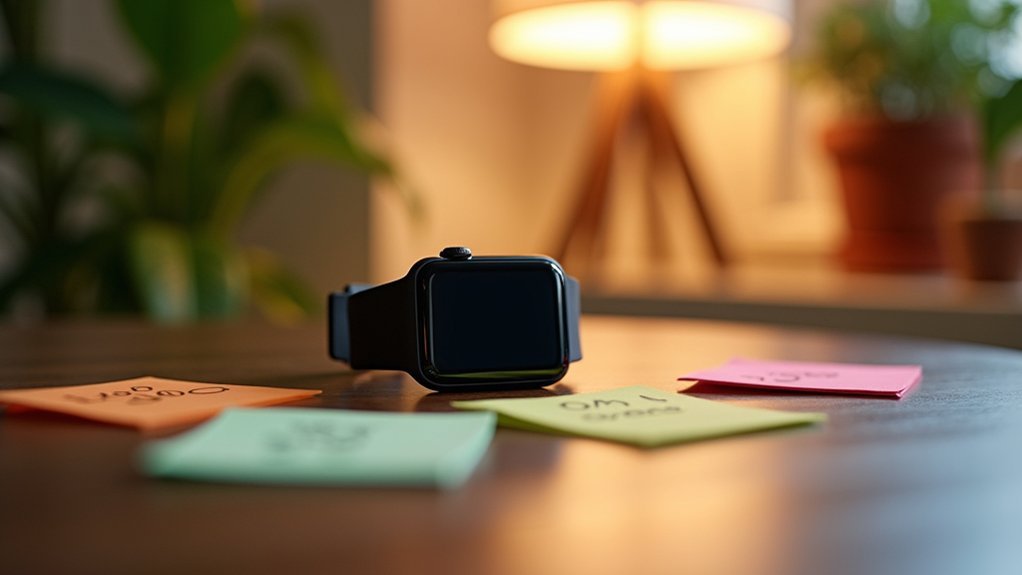
You’ll receive automated weekly progress reports that compile your activity data into digestible summaries every seven days.
These updates include milestone achievement summaries that highlight what you’ve accomplished and where you’re falling short of your targets. These weekly summaries can celebrate user milestones to help reinforce positive behavior patterns.
The system also sends trend analysis notifications that show patterns in your performance, helping you identify whether you’re consistently improving or need to adjust your approach.
Automated Weekly Progress Reports
Although manual progress reporting can consume valuable time and lead to inconsistent updates, automated weekly progress reports transform how you track and communicate goal achievement.
You’ll streamline your workflow while maintaining consistent stakeholder communication through scheduled Friday updates and real-time data visualization. Automation reduces the need for frequent status meetings by providing stakeholders with comprehensive data when they need it.
Here are four essential automated reporting strategies to implement:
- Template Integration – Use Weekdone templates with social newsfeeds for team alignment and real-time progress visibility across all stakeholders.
- Dashboard Creation – Deploy business intelligence tools to build customized dashboards that automatically visualize your progress metrics and goal tracking data.
- Status Automation – Implement RYG status symbols and progress tracking columns that update automatically, reducing manual effort while improving accuracy.
- System Integration – Connect reporting tools with existing project management platforms to eliminate data duplication and enhance workflow continuity.
Milestone Achievement Summaries
Weekly milestone achievement summaries transform scattered goal progress into digestible insights that keep you motivated and on track.
You’ll receive these summaries at week’s end or early next week, delivered during off-peak hours like mornings or evenings to maximize your attention.
Your summary includes bulleted key accomplishments, metrics showing goals met and progress percentages, plus challenges you’ve overcome.
Next steps keep momentum flowing while resource updates provide context. Visual elements like progress bars and color-coded sections make scanning effortless on any device.
Customize your experience by filtering content topics, adjusting notification frequency, and setting personal achievement thresholds.
You can opt in or out of specific metrics and choose delivery through email, app notifications, or dashboard views. These summaries provide a feedback loop that helps you spot effective methods and discard ineffective ones through routine evaluation.
Users who receive consistent summaries show 60% higher engagement and improved goal persistence.
Trend Analysis Notifications
When your goal progress follows patterns that reveal broader insights about your habits and performance, trend analysis notifications transform raw data into strategic intelligence.
You’ll receive customized summaries that match your goal timeline and personal rhythm.
Choose from these frequency options to maximize your tracking effectiveness:
- Weekly summaries on Fridays – Perfect for reviewing progress and planning weekend adjustments
- Daily updates for high-priority goals – Essential when you’re tackling urgent, short-term objectives
- Bi-weekly reports for longer-term goals – Ideal for maintaining momentum without notification fatigue
- Monthly summaries for quarterly targets – Best for tracking major milestones and seasonal objectives
Your notification timing aligns with peak activity hours and habit formation periods, ensuring you receive insights when you’re most likely to act on them.
Strategic timing can significantly improve user interaction rates, making your optimal times critical for achieving sustainable progress toward your activity goals.
Hourly Activity Check-In Prompts
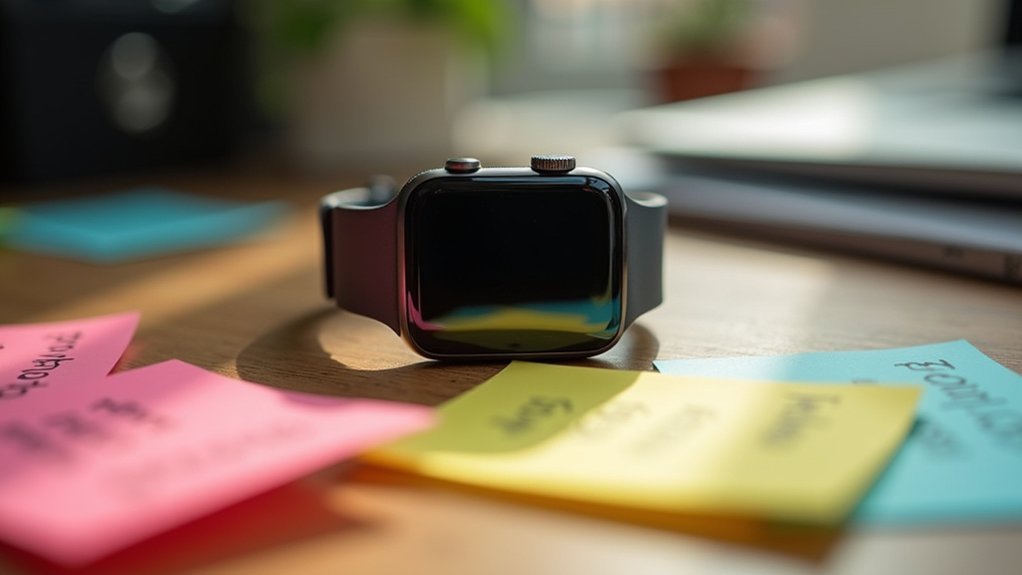
You’ll want to time your hourly activity prompts strategically rather than setting them at random intervals throughout the day.
Consider scheduling check-ins during periods when you’re typically sedentary, like mid-morning desk work or afternoon meetings, to maximize their effectiveness.
Customize these prompts based on your personal schedule and activity patterns so they feel helpful rather than intrusive. Keep your prompts direct and simple to ensure you can quickly respond and get back to your activities without disruption.
Strategic Check-In Timing
Since your fitness tracker’s hourly prompts can make or break your daily activity goals, timing them strategically during your workday becomes essential for long-term success. Rather than accepting default settings, you’ll maximize results by customizing when notifications appear based on your lifestyle patterns and work schedule.
Strategic timing transforms basic reminders into powerful behavioral tools:
- Morning to 6 PM window – Focus prompts during peak activity hours when you’re most likely to respond positively.
- Pre-60 minute thresholds – Set alerts before reaching critical inactivity periods to prevent prolonged sitting.
- Work break alignment – Schedule prompts during natural shift periods to minimize workflow disruption.
- Progressive step tracking – Use early evening check-ins to guarantee you’re 70% toward daily goals before evening wind-down.
This approach reduces sitting bouts by 29% while increasing daily steps by over 30%. Just as managers find that weekly one-on-ones create stronger connections with employees, consistent hourly check-ins build a more reliable relationship with your fitness goals.
Activity Prompt Customization
Beyond smart timing, your hourly activity prompts need personalized customization to match your unique lifestyle and preferences. You can adjust frequency based on your baseline activity level—sedentary workers need more frequent reminders, while active individuals require fewer, targeted nudges. Customize intensity from gentle vibrations to audible alerts depending on your environment and preferences.
| Customization Type | Options |
|---|---|
| Frequency | Every 30 minutes for sedentary jobs, hourly for moderate activity |
| Intensity | Gentle vibration, audible alert, visual notification |
| Message Tone | Encouraging, factual, motivational quotes, progress stats |
| Activity Focus | Walking breaks, standing reminders, stretching cues |
Tailor prompt content with varied messaging—combine motivational quotes, health facts, and actionable mini-goals. This prevents alert fatigue while maintaining engagement and improving your response rates. Like effective one-on-one meetings, successful activity prompts require consistent scheduling to build productive habits and maintain long-term engagement.
Custom Interval Progress Tracking
Modern fitness apps offer three essential tracking features that transform how you monitor interval workouts. You’ll get customizable routines that save your preferred settings, multiple timer functions for complex sequences, and visual progress indicators with colored bars that keep you motivated throughout each session.
These tracking capabilities help you stay focused and measure improvement over time:
- Large visual displays with colored progress bars provide instant feedback during intense intervals
- Customizable warning sounds alert you before shifts to maintain proper timing
- Progress visualization tools show workout completion status in real-time
- Workout history tracking lets you analyze past performance and adjust future sessions
You can combine existing routines for more challenging workouts while maintaining clear visibility of your progress through intuitive interfaces designed for quick reference during active training. Advanced users can further optimize their experience by exporting and importing routines across devices, ensuring their training configurations remain consistent regardless of platform.
Location-Based Activity Reminders
While interval tracking helps you monitor workouts in real-time, your fitness app’s location-based reminders work automatically in the background to prompt activity based on where you are.
These GPS-powered notifications trigger when you’re near parks, gyms, or favorite running routes, providing contextual encouragement exactly when you need it.
Smart location alerts deliver perfectly timed fitness motivation right when you pass your favorite workout spots.
You can customize these reminders by setting specific locations where you’d like activity prompts. For example, configure notifications when you arrive at work to remind you about lunchtime walks, or set alerts near fitness centers you frequent.
Studies show users who enable location-based reminders meet aerobic activity guidelines more often than those who don’t. As the wearable fitness technology market continues to expand with projected revenues reaching USD 187.2 billion by 2032, these advanced features are becoming increasingly sophisticated and accessible.
The key is finding the right balance—too many location triggers become annoying, while strategic placement boosts motivation and adherence rates considerably.
Smart Adaptive Notification Timing
Although location-based reminders provide helpful contextual prompts, smart adaptive notification timing takes personalization to the next level by learning your unique patterns and preferences.
AI-powered systems analyze your activity data, sleep patterns, and physiological responses to determine the ideal moments for fitness reminders.
Here’s how smart adaptive timing enhances your workout experience:
- Predictive Analytics – AI predicts your most receptive moments based on historical engagement patterns
- Real-Time Adjustments – Systems modify notification timing based on current activity levels and stress indicators
- Physiological Integration – Wearable data informs timing decisions using heart rate variability and energy levels
- Dynamic Goal Setting – Notifications adjust automatically as your fitness level progresses
This sophisticated approach creates continuous insights that make each notification feel perfectly timed rather than intrusive, significantly improving your likelihood of following through on fitness goals.
This technology guarantees you’re motivated when you’re most likely to act.
Frequently Asked Questions
Can I Sync Goal Notifications Across Multiple Devices Simultaneously?
You can sync goal notifications across multiple devices if they’re linked to the same account and apps support cross-device syncing. Enable auto-sync, maintain connections, and use one primary fitness app as your central hub.
How Do I Backup and Restore My Notification Settings?
You’ll backup notification settings through Android’s built-in Google Backup in Settings. Enable auto-backup for regular saves. Restore them by selecting your Google account during setup or through Settings > Google > Backup options.
Which Notification Sounds Work Best for Different Goal Types?
You’ll want energetic beeps for physical activity goals, gentle chimes for mindfulness tasks, subtle or minimal sounds for screen-time reduction, and brief high-pitched tones for workplace goals to maximize effectiveness.
Can I Share My Goal Notification Settings With Team Members?
You can’t directly share your notification settings with team members, but you can configure notifications to reach specific roles or team members. Use collaboration tools like Slack or Teams to customize who receives goal updates.
Do Goal Notifications Drain Battery Life Significantly on Mobile Devices?
Goal notifications don’t considerably drain your battery on mobile devices. You’ll experience minimal impact due to efficient protocols and optimized systems. However, you can reduce consumption by limiting notification frequency and disabling unnecessary background processes.

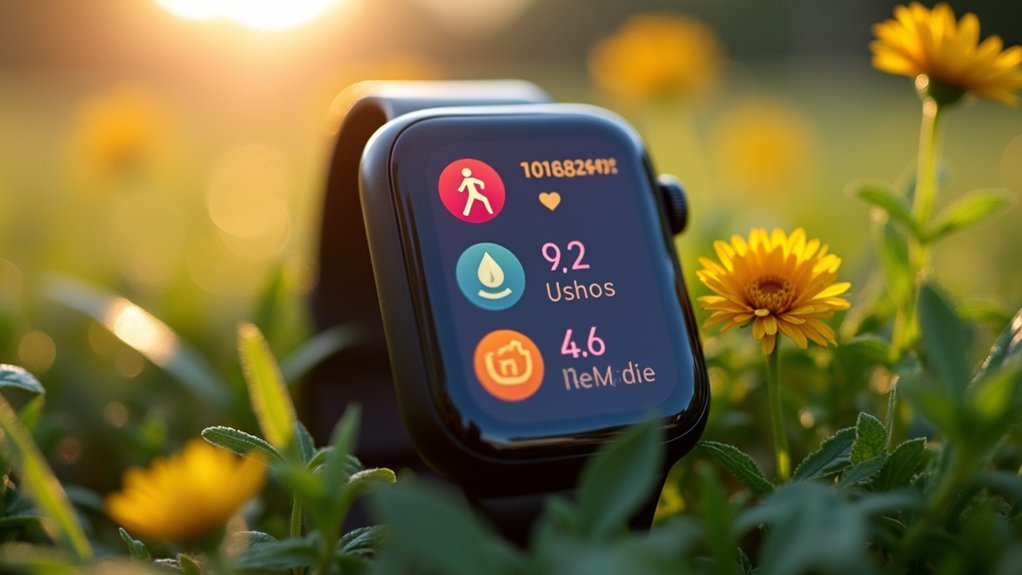
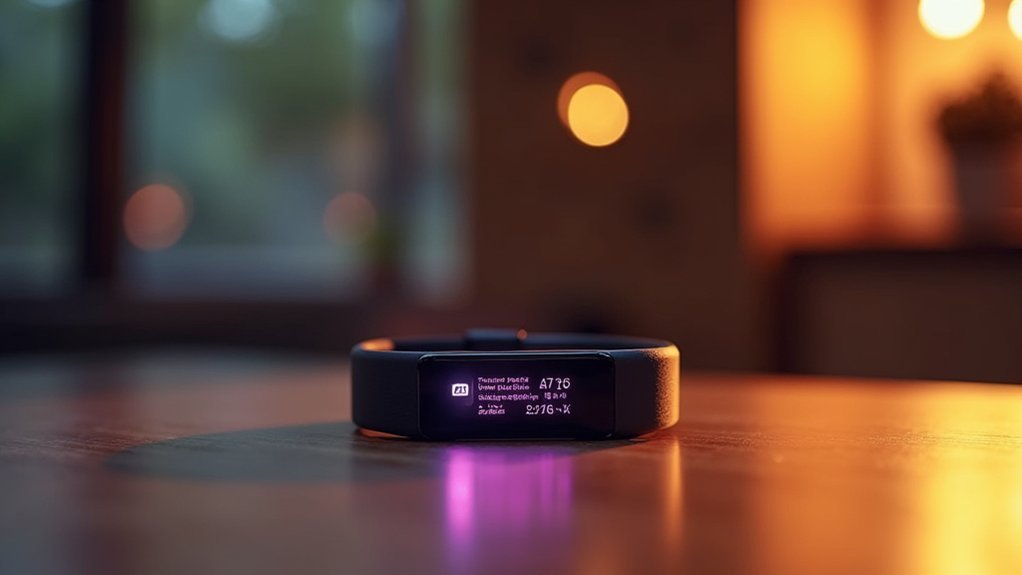
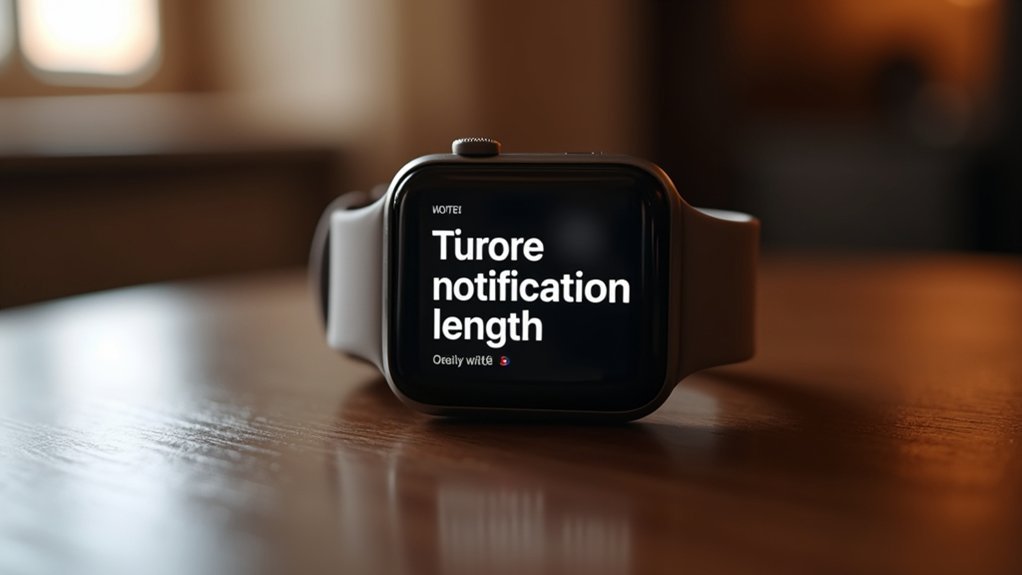
Leave a Reply